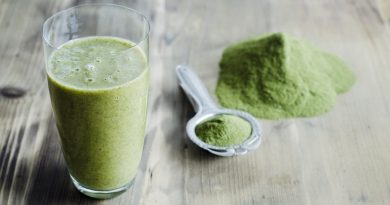7 main myths about nutrition and training, in which it’s time to stop believing!
In our time, you can find many different information about a healthy lifestyle, proper nutrition and exercise. Everywhere are given recommendations on what to eat, when, in what quantity, what training to attend. But sometimes there are such tips that you begin to doubt the truth of these statements.
In this article, we debunk some myths about proper nutrition and exercise.
Myth 1: Cleansing the body with detox
Marketing specialists unanimously assure us of the need to cleanse our body with detox, which is supposedly almost a panacea and relieves all toxins and toxins. But this is just a well thought-out PR move.
As in reality
The human body is a complex mechanism that can self-clean and recover, therefore, does not need any help.
Our kidneys and liver work as one device and perfectly cope with their functions for cleaning the body. The main thing is to monitor the health of these organs (however, like the whole body).
As for the detox – it’s just a commercial myth. Moreover, the use of the contents of beautiful bottles can harm your health. First, the juice of vegetables and fruits does not contain fiber – the main “cleaner” of our body, without which it loses the ability to self-purification. Secondly, the body will not receive protein, and as a result, you will lose muscle mass, not fat. You will always be hungry, and fatigue will be your main companion throughout the diet.
Myth 2: Because of the use of diet drinks with gas, you can recover
Harm from dietary carbonated drinks is the same as from conventional, and maybe even more. Their main danger lies in the maintenance of a large number of fast carbohydrates, which are not used by the body, but are transformed into fat.
As in reality
However paradoxical it may sound, the latest developments speak of another. During the three months of the experiment, people who observe a diet and drink soda, dropped on average 40% more weight than participants who drank clean water.
This leads to the conclusion: low-calorie dietary carbonated water and sugar substitutes do not promote weight gain, and even on the contrary, help to reset it.
Myth 3: Canola oil is harmful and toxic
In fact, canola oil and rapeseed oil are one and the same. And since rapeseed oil is very toxic, it cannot be eaten.
As in reality
Rape oil is really very dangerous and harmful to health due to the content of erucic acid, which provokes a number of diseases. It is used only for industrial purposes.
Canola oil is made from modern Canadian varieties of rapeseed, seeds of which are low in erucic acid and glucosinolates. As a result, these oils differ in composition.
Due to its excellent taste and the content of a large number of unsaturated fatty acids (93%), as well as oleic acid (62%), which are useful and indispensable for humans, this oil is compared with olive oil.

Myth 4: Sea salt contains less sodium and much more minerals than in cooked
If you are a fan of healthy food and always stick to its principles, then you will necessarily include sea salt in your diet, since it is more useful than a cookery.
As in reality
In fact, in sea salt, and in cookery is the same amount of sodium. And there are no important microelements in any of them. The only thing that can be said is that sea salt contains at times more calcium than regular salt. But to fill the lack of calcium in the body, eating salt for food – this, at least, is not very reasonable.
In addition, in natural sea salt is an insignificant amount of iodine, the deficit of which in the body can threaten various diseases.
You may also like to read: Getting into shape: The program in 10 moves to do that in a month
Myth 5: There are foods that have a negative calorie content
If you are aiming for weight loss, then you must adhere to a diet that will include foods with a negative calorie content. First of all, these are vegetables, greens and fruits:
- White cabbage;
- Cucumbers;
- Iceberg lettuce;
- Parsley;
- Grapefruit;
- Celery and others.
As in reality
What does negative caloricity mean? By this concept, as a rule, it is meant that for the digestion of food with such a fantastic property our body spends more energy than it receives. Therefore, the calories are taken from the subcutaneous fat and, as a result, you lose weight, although you eat.
The products that contain, so-called, negative calories actually do not exist. Rather, we can say that the calorie content of such products is close to zero, but still it is.
Myth 6: In three weeks you can acquire new habits and eradicate the old
To instill yourself any habit, for example, do exercises in the morning, you need to perform it regularly for 21 days. At the end of this time, the new habit will be precisely worked out.
As in reality
In order for the habit to form, it takes more than three weeks, namely 90 days. A month later, your skills are just beginning to evolve, but are not yet something obligatory for you.
Myth 7: Muscle mass can be transformed into fatty and vice versa
After stopping training, muscle mass, recruited by hard work, will turn into fat.
As in reality
That’s what many people think. But this statement is not entirely true. The tissues of muscles and fat are different substances of our body, therefore, cannot “flow” from one to another. When you stop exercising, the only thing that happens is the weakening of muscle activity and, as a consequence, the reduction in muscle volume. And sticking to the same diet with the same number of calories, you will inevitably earn fat deposits on the sides.
Intensive training actively burns fat and muscle cannot be formed from it.




